In the April Plant of the Month, I wrote about my explorations in the Desert Botanical Gardens and two interesting plants my friend, Barbara, and I discovered there. I then challenged readers to guess the names of these plants and figure out how they are related to previous plants of the month. Here is “the reveal!”
In the April Plant of the Month, I wrote about my explorations in the Desert Botanical Gardens and two interesting plants my friend, Barbara, and I discovered there. I then challenged readers to guess the names of these plants and figure out how they are related to previous plants of the month. Here is “the reveal!”
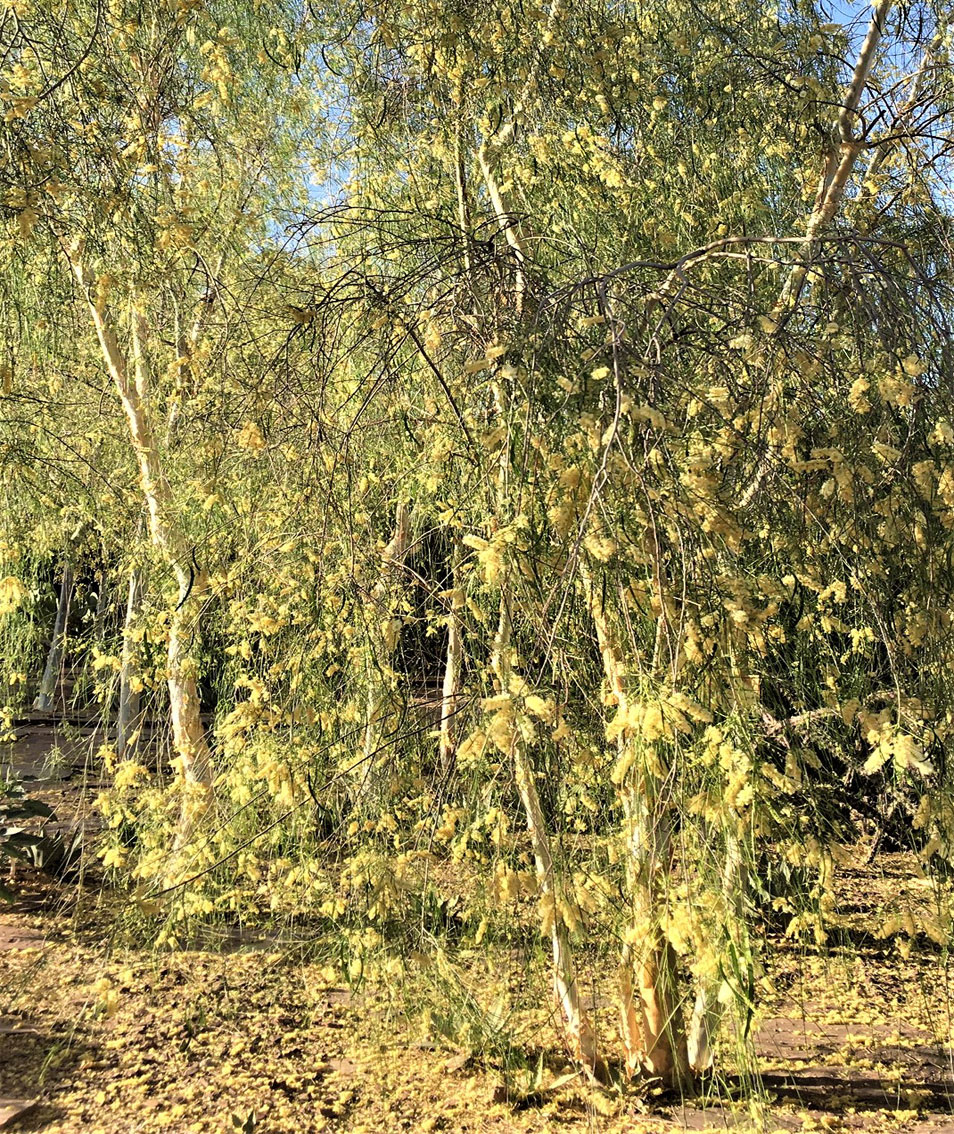
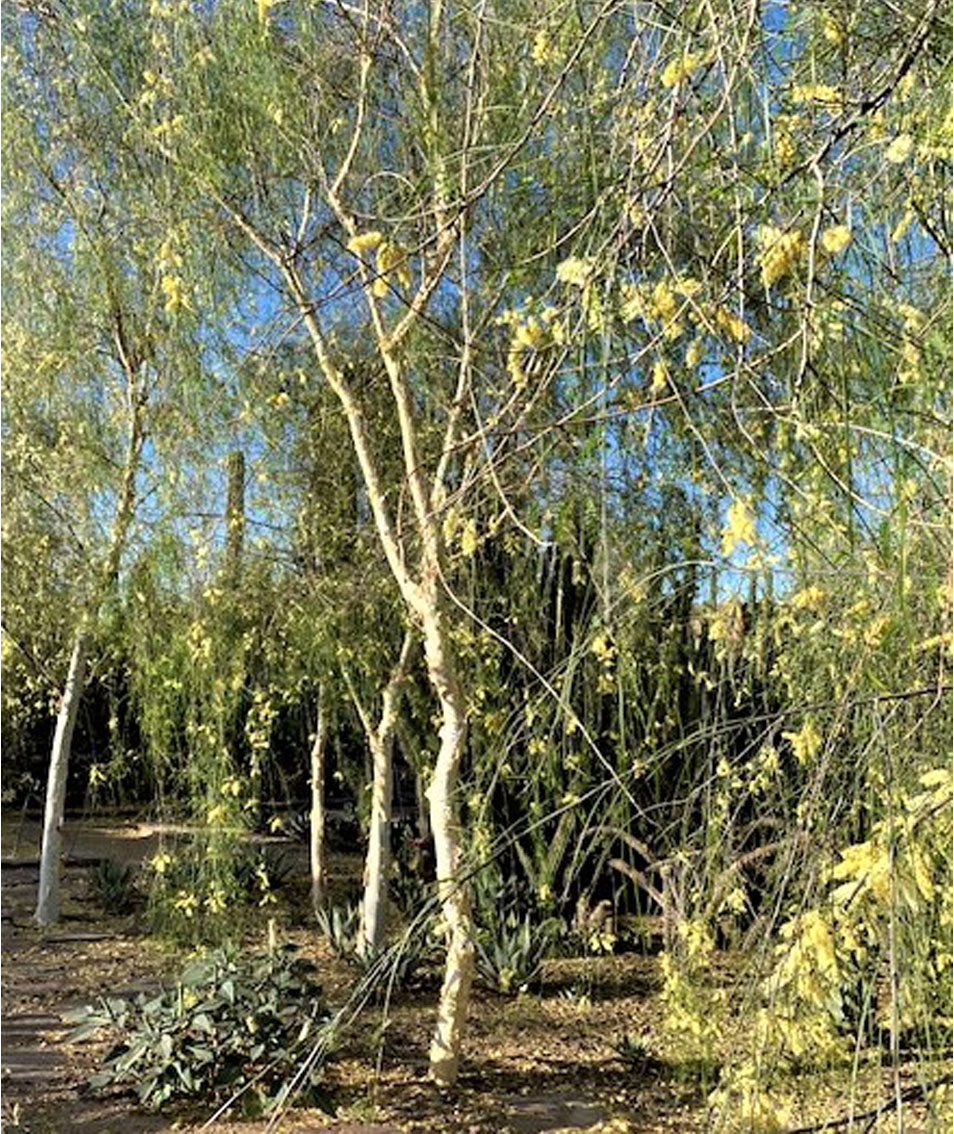
Barb and I were fascinated by this unusual tree with its graceful shape and fuzzy flowers. You might also have noticed the beautiful white bark which is the source of its name. If you guessed or knew it is a Palo Blanco, you’d be 100% correct. Just like Palo Verde (August POTM) means “green pole or green stick,” this tree is “white pole or white stick.”
While the two types of trees don’t belong to the same botanical family, they do have a lot of similarities. Both are native to the Sonoran Desert, although the Palo Blanco grows more commonly in Mexico and Texas while the Palo Verde is more common in Arizona. Both have small “pinnately compound leaves” – that is, the leaf is made up of tiny leaflets which are arranged on opposite sides of the branch or stem. Both are valued as accent plantings, providing filtered shade and attractive trunk and branch formations when pruned correctly.
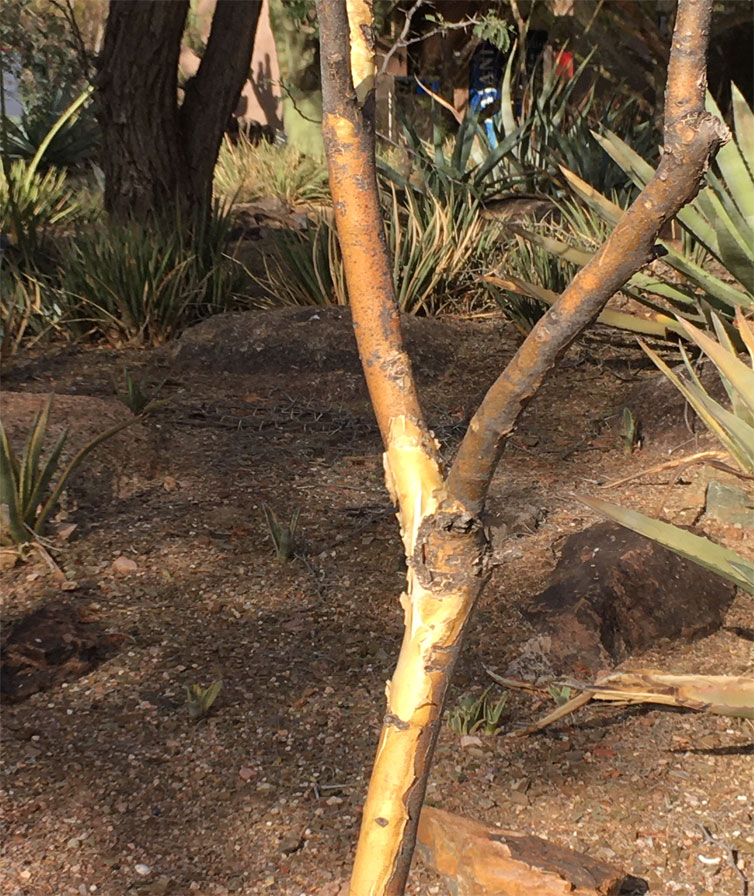
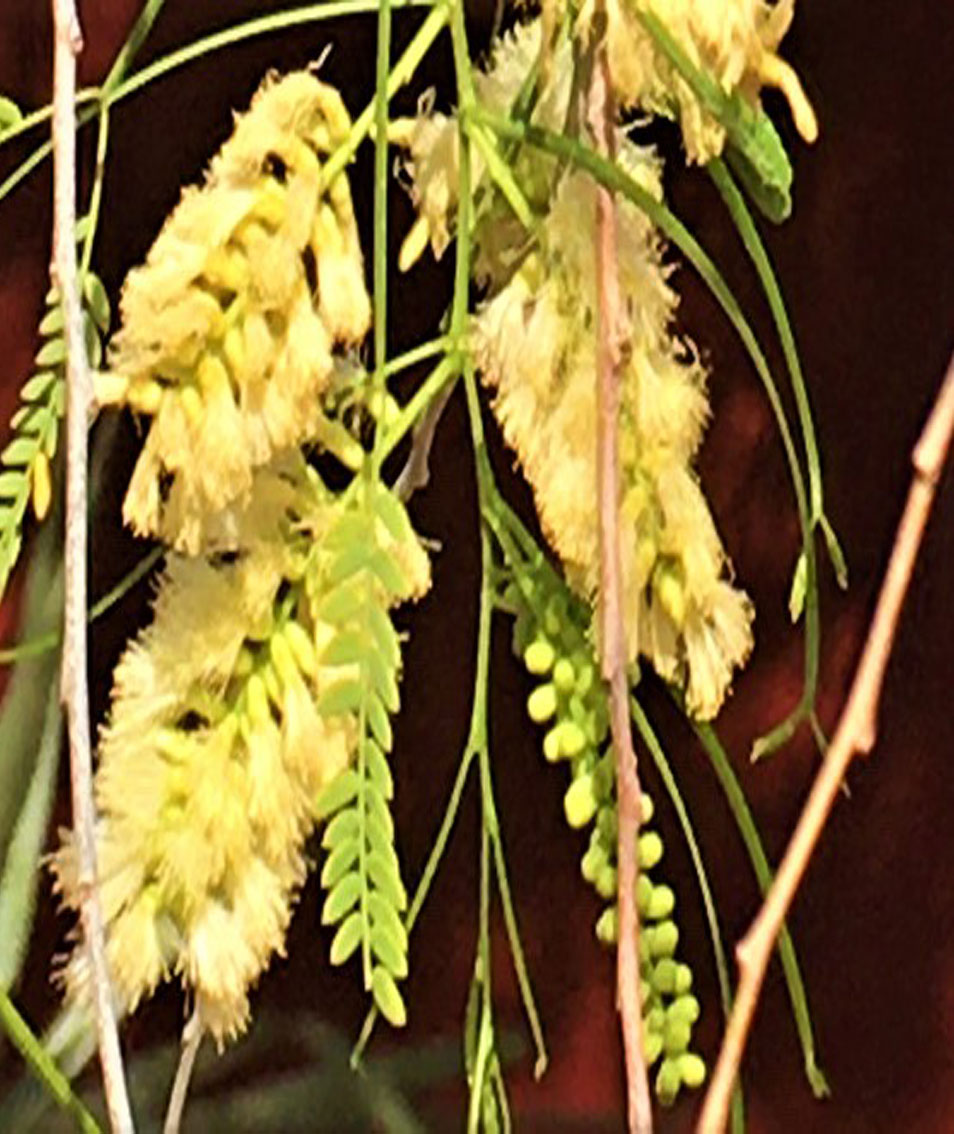
Both plants are drought tolerant although the Palo Verde has the edge because its green bark allows it to make and store chlorophyll. Both can be planted in full sun and prefer low amounts of water. Both plants also shed a lot, dropping flowers and leaves, so it’s not a good idea to plant either one too close to a walkway or a pool.
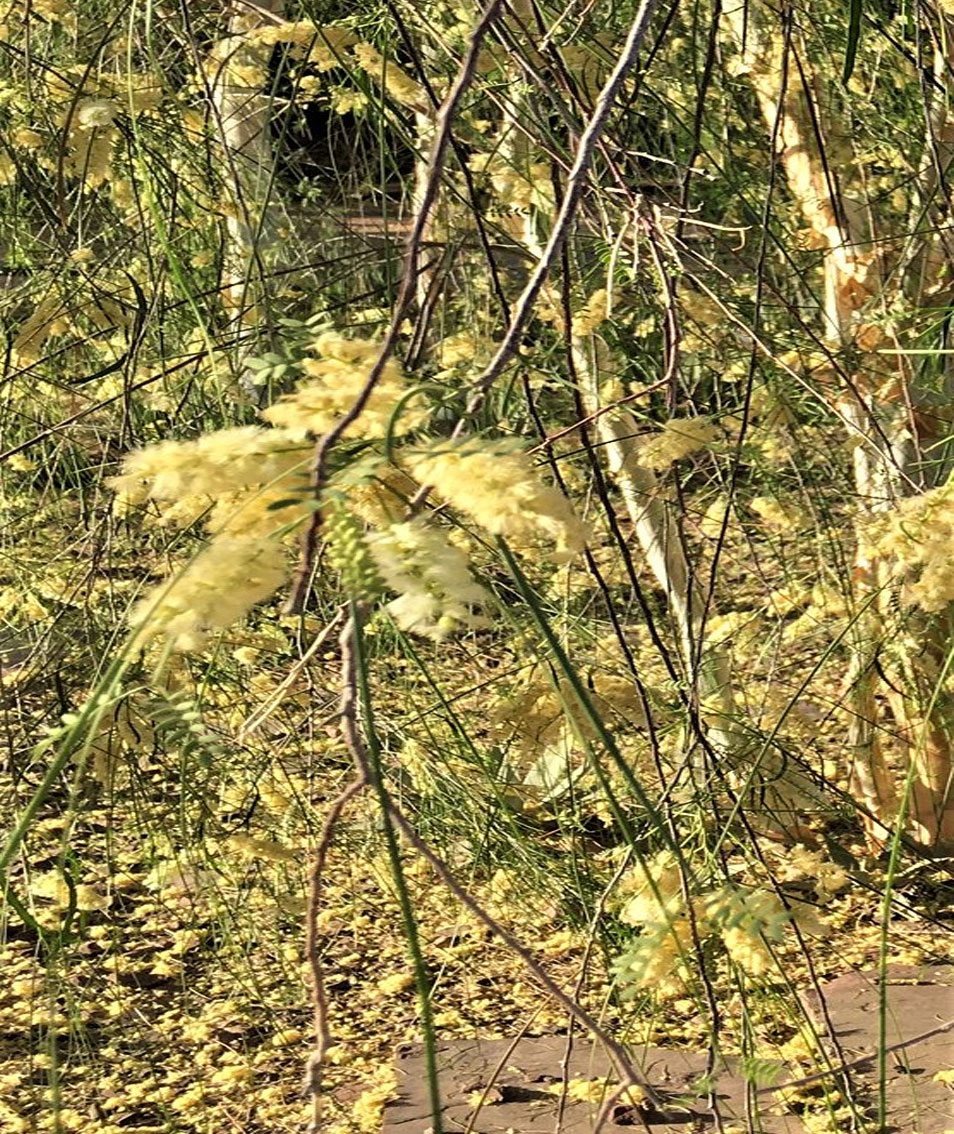
The Palo Blanco differs from the Palo Verde in that it has no thorns. It starts out spindly, but after ten to fifteen years, it grows into a graceful tree with cascading, fountain-like branches. Its maximum height is about twenty feet with a maximum spread of about ten feet.
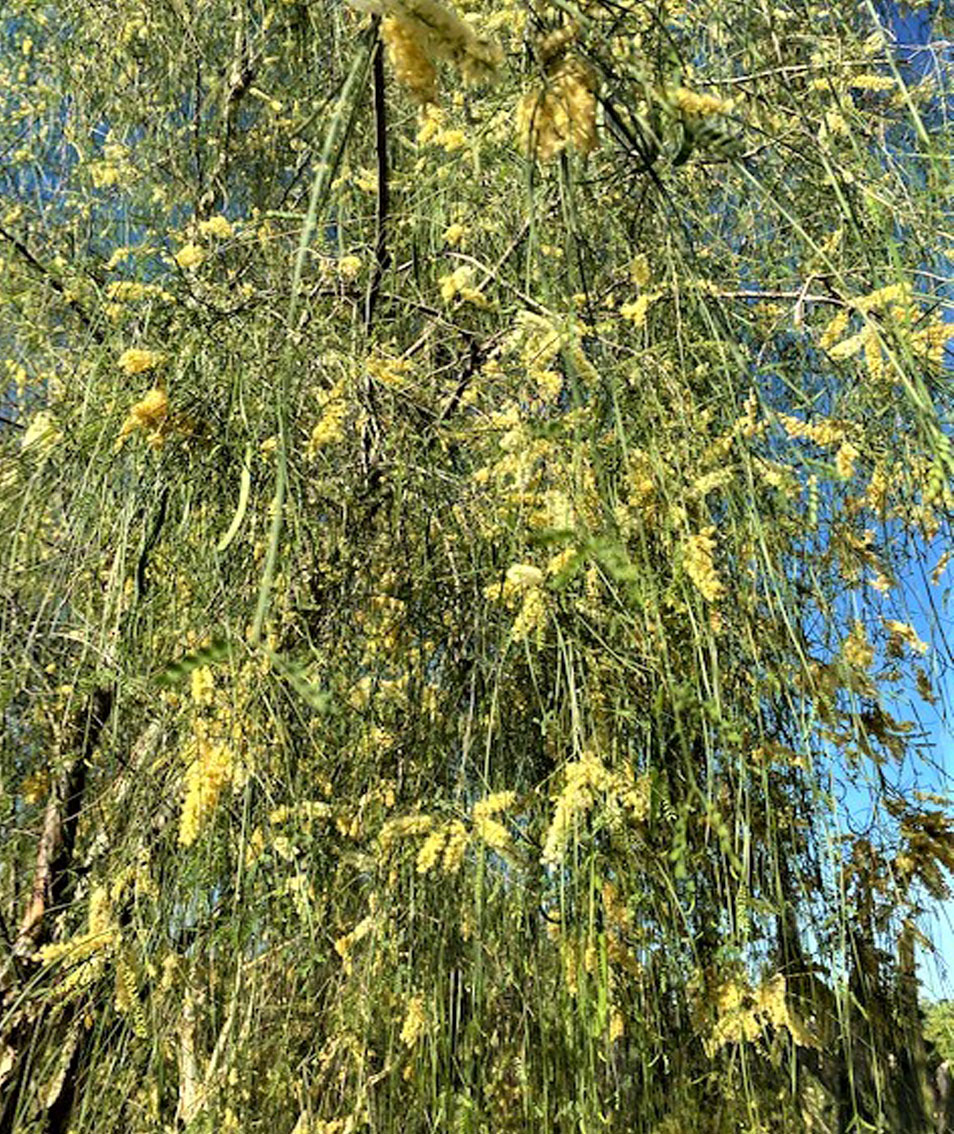
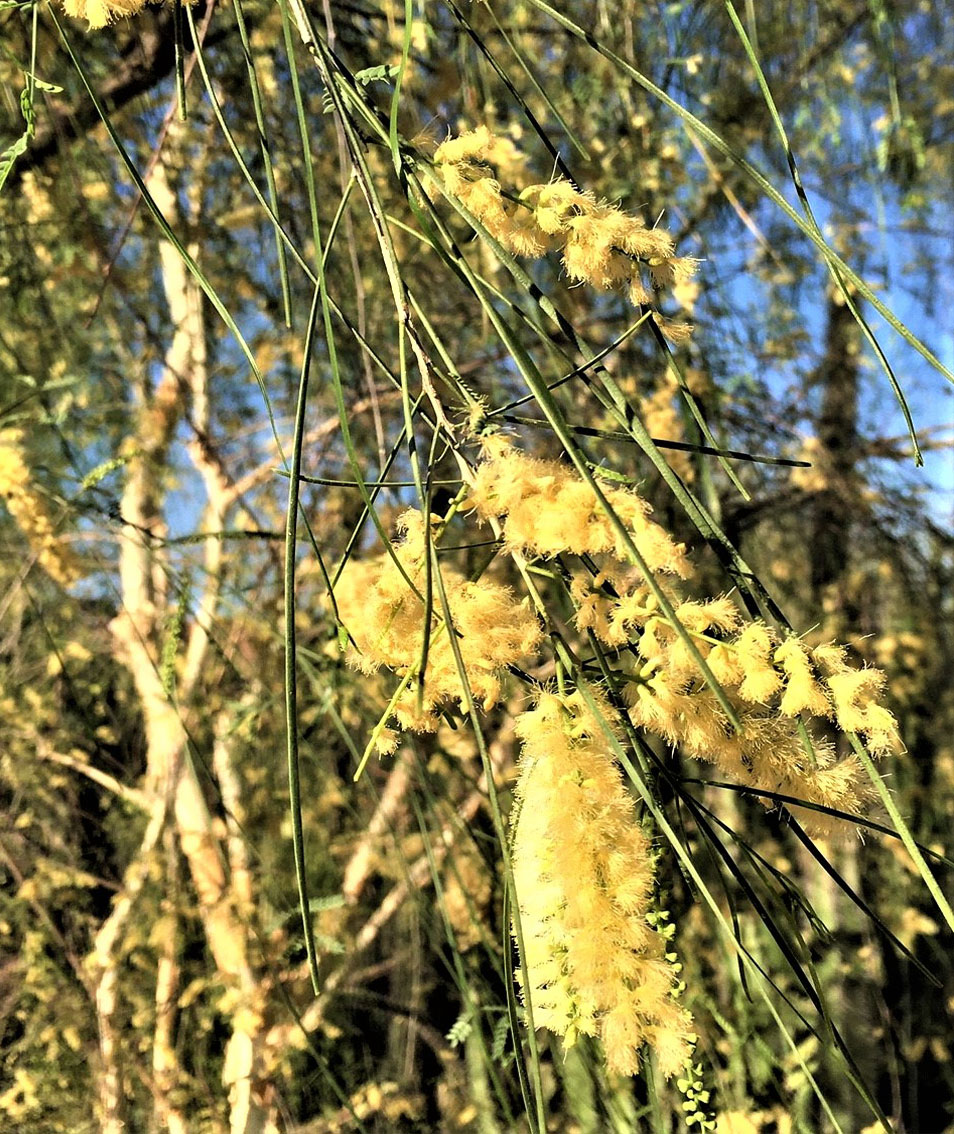
The most striking thing about the Palo Blanco besides the bark are the cream-colored flowers. They are called “phyllodes” which means rod-shaped flowers. The flowers appear in the spring, and are followed by the fruits which are small, brown pods.
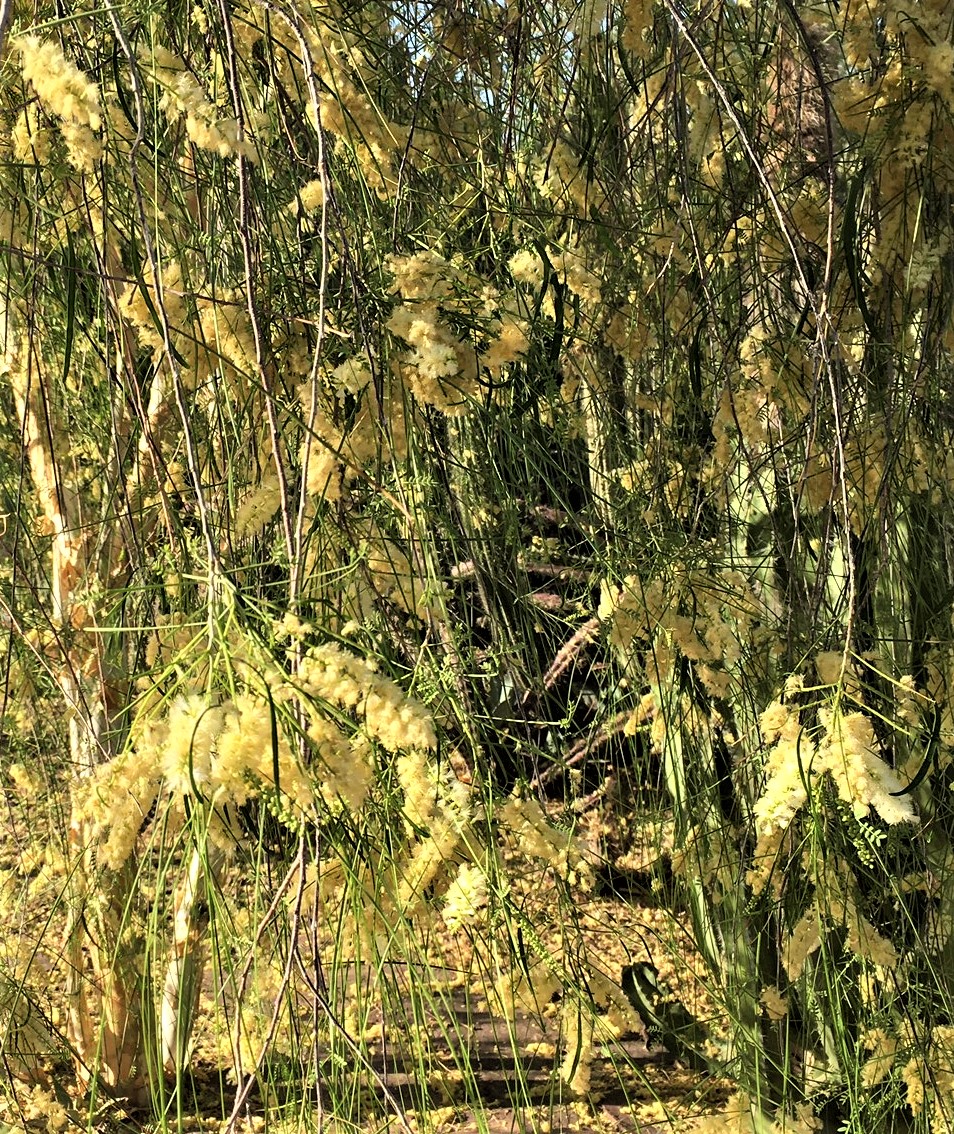
The second mystery plant I nick-named “Spike” for obvious reasons. It was probably a little easier for readers to recognize it as a relative of the Prickly Pear because Spike has definite similarities with all the many members of the rather large and diverse Opuntia family of cacti.
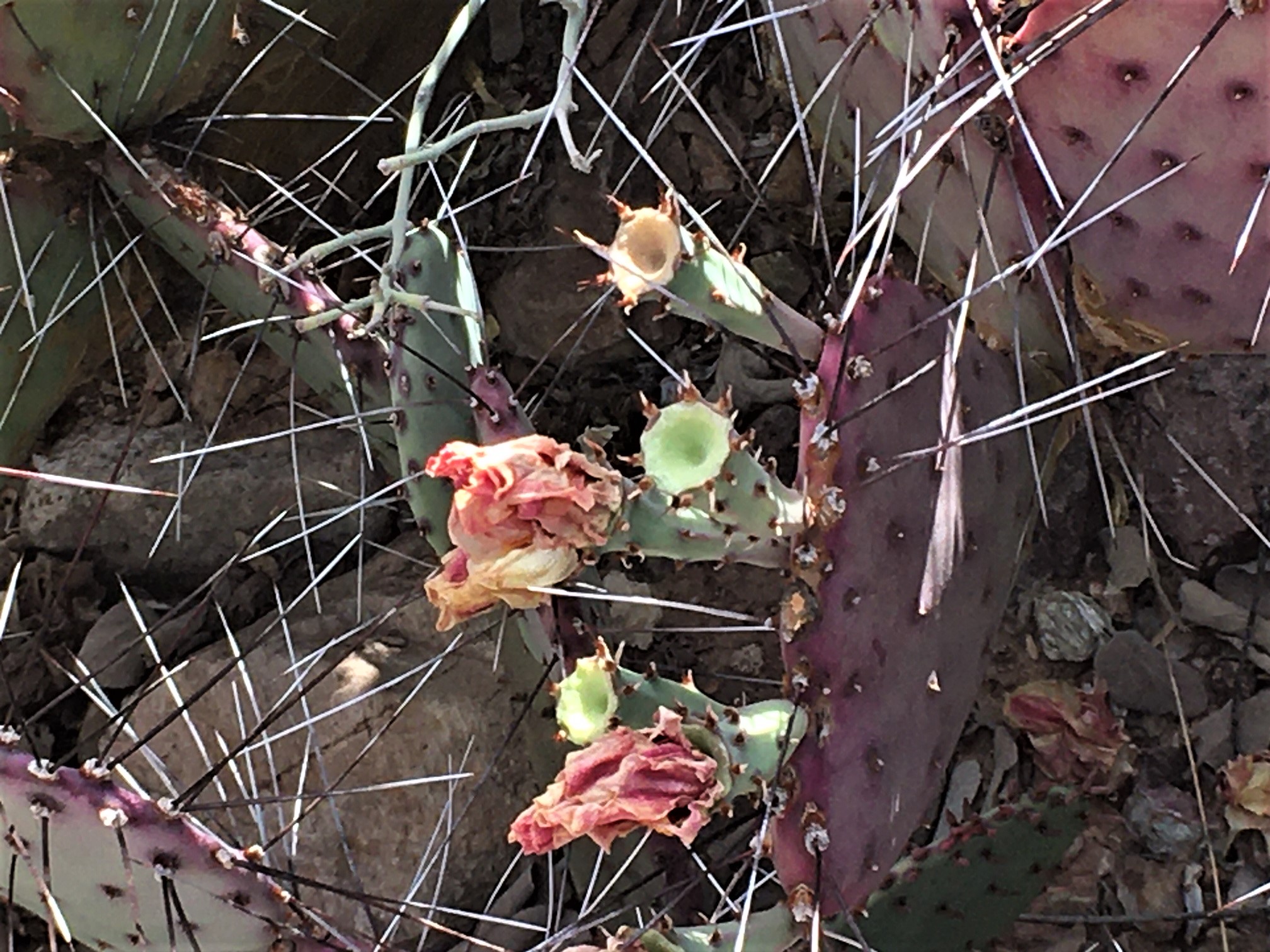
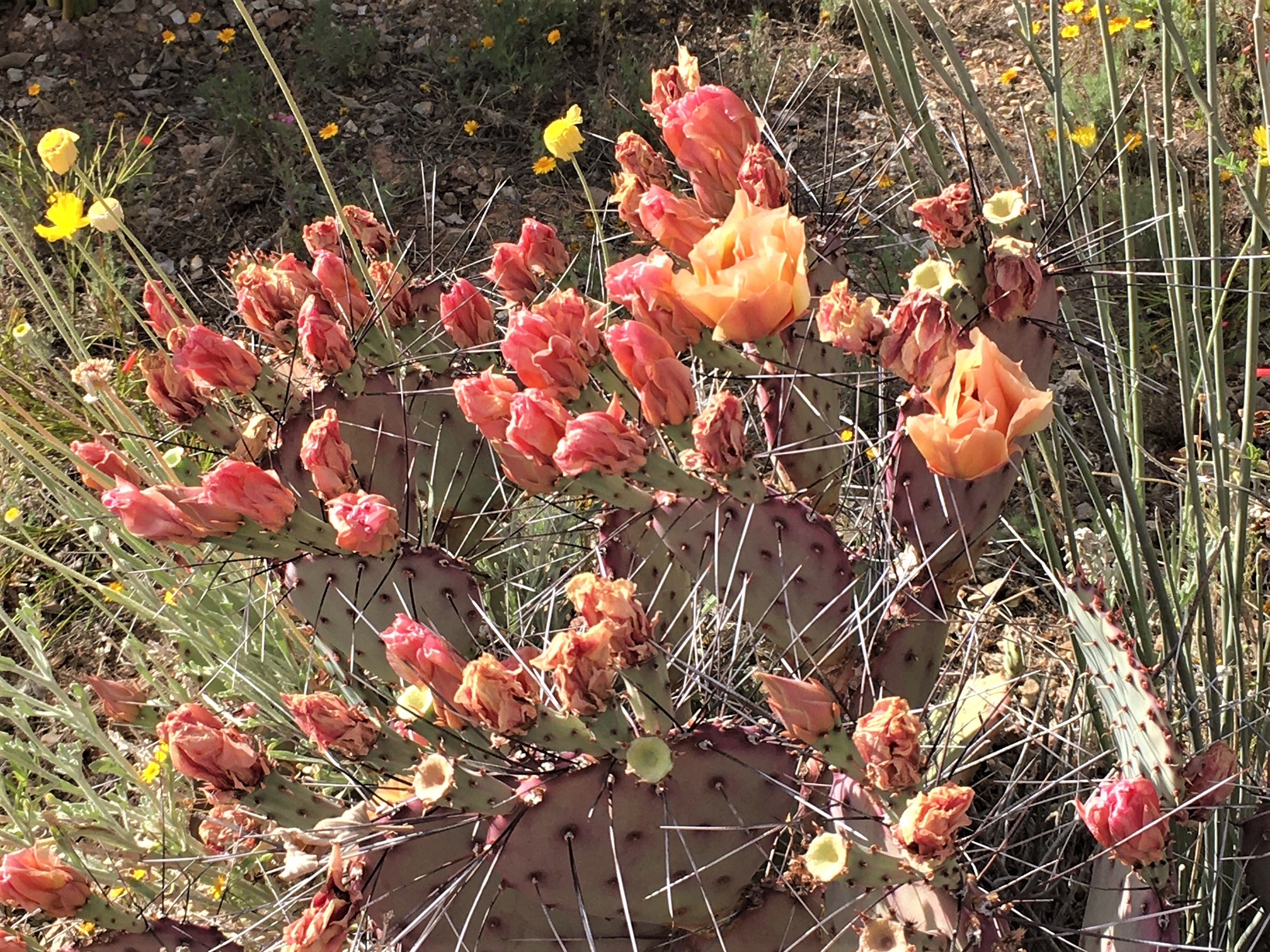
Spike is a Black Spined Prickly Pear, also known as a Long Spine, Purple or Redeye Prickly Pear. The spines grow from areoles on the upper half of each pad, one to three spines from each areole. Spines are from 2 to 4 inches long and the longest ones usually point straight up.
The stems of the Black Spined Prickly Pear can be blue-grey, blue green or purple. The lavender tinted pads are another reason Spike is unusual. When the plant is stressed by either cold or drought, the purple color becomes more intense which makes it an especially eye-catching cactus during desert winters when most everything else is drab.
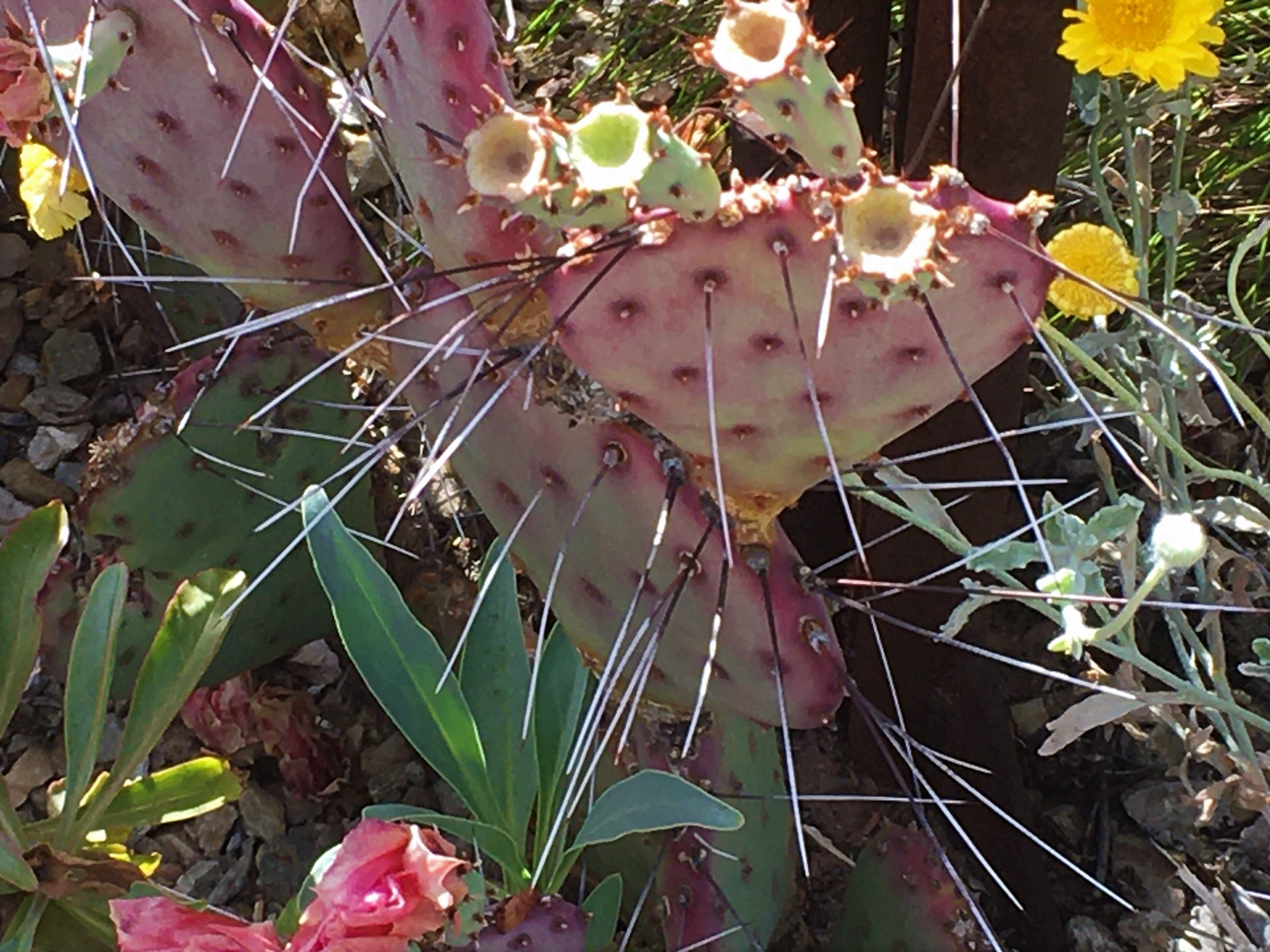
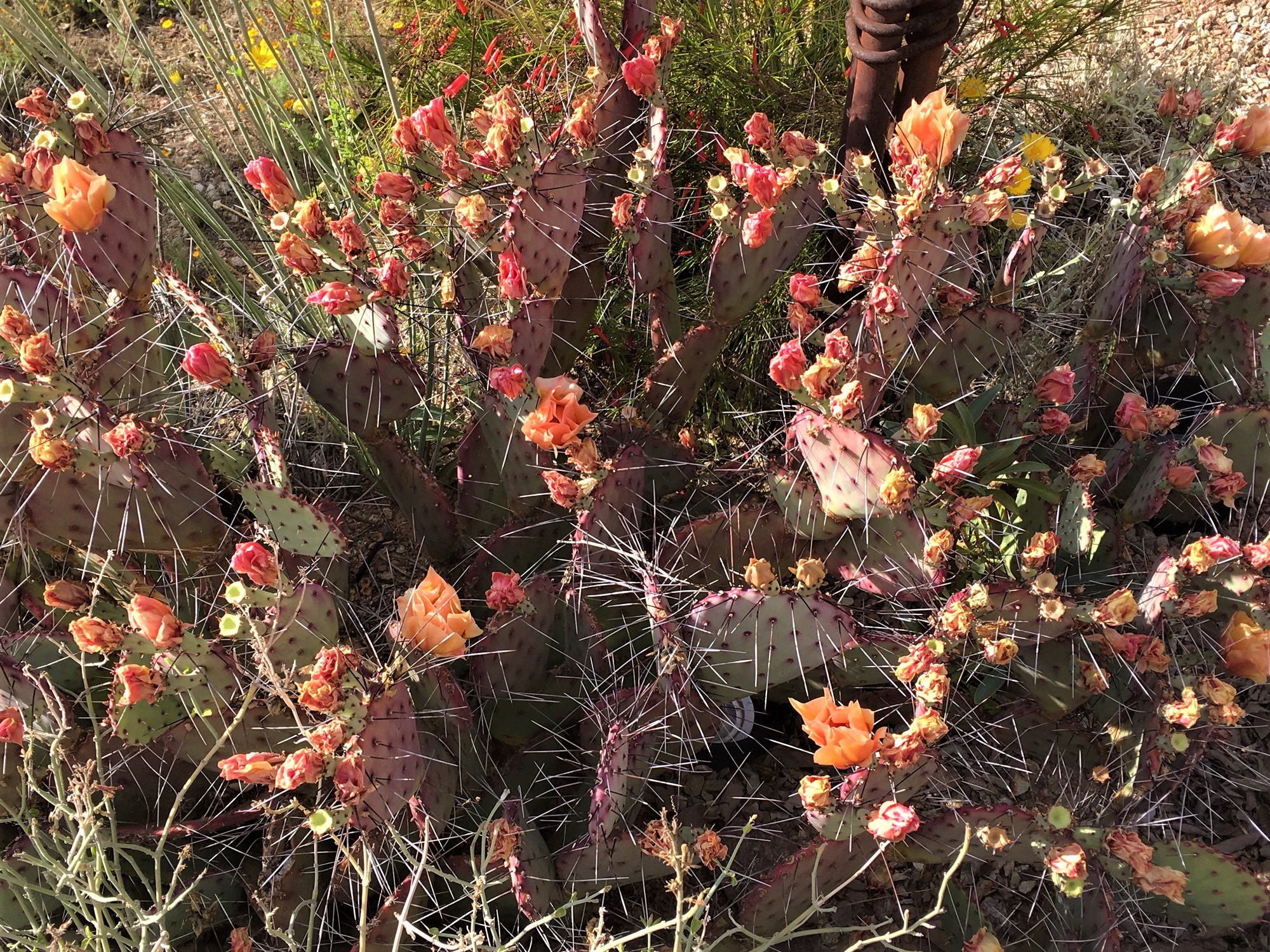
Black Spined Prickly Pears usually grow a maximum of two to three feet high and three to six feet wide. Like the rest of their family, they are drought tolerant and deer and rabbit resistant. Birds, however, are attracted to their fruit.
In the spring and summer, Black Spined Prickly Pears put out bicolor red and yellow flowers on the upper edge of their pads. These are followed by reddish purple fruit. Like the other members of the Opuntia family, Spike and his relatives were an important food and medicine source for the Native Americans of the Sonoran Desert.
The Mystery Plants Revealed:
Palo Blanco and Black Spined Prickly Pear
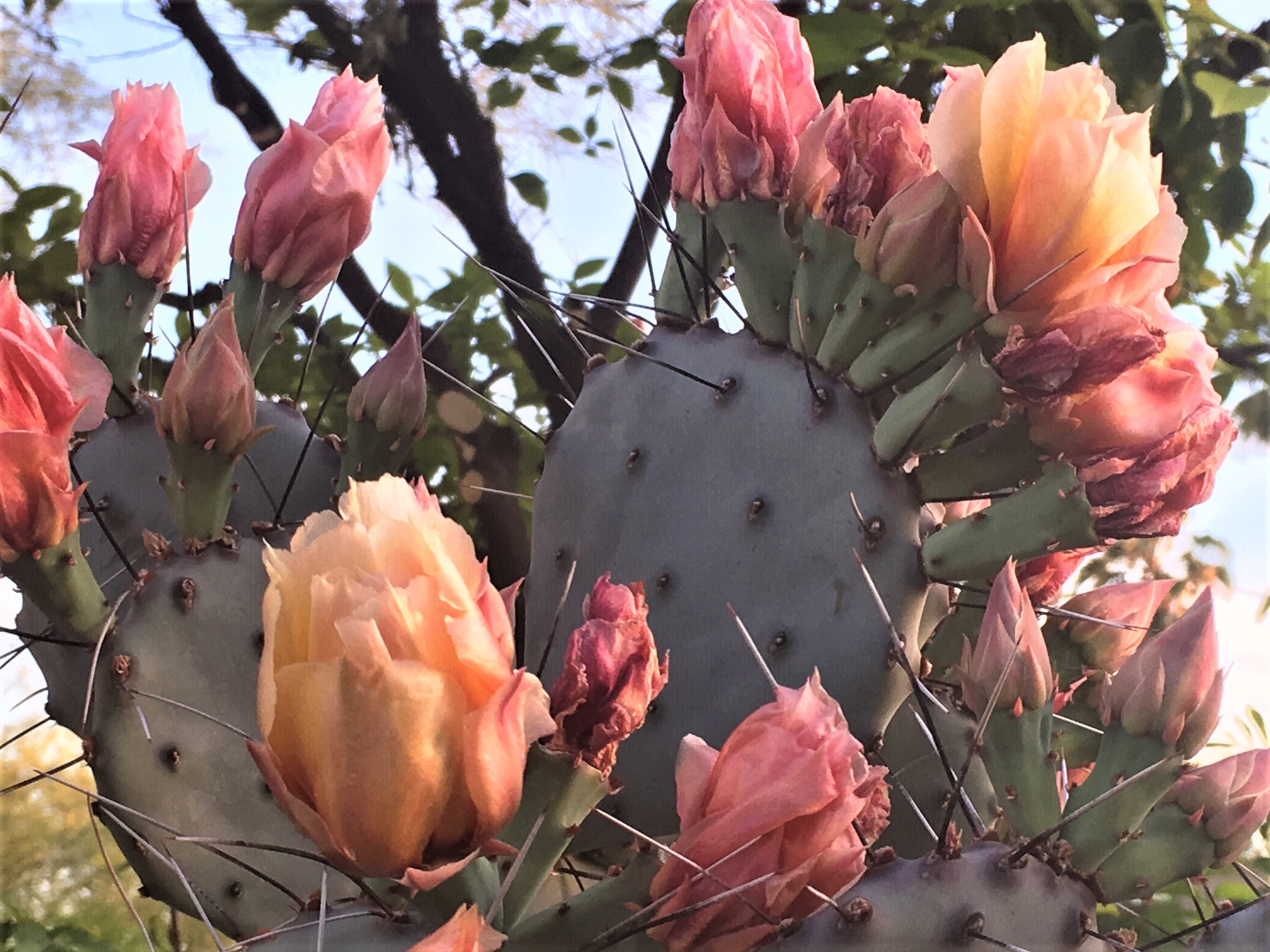
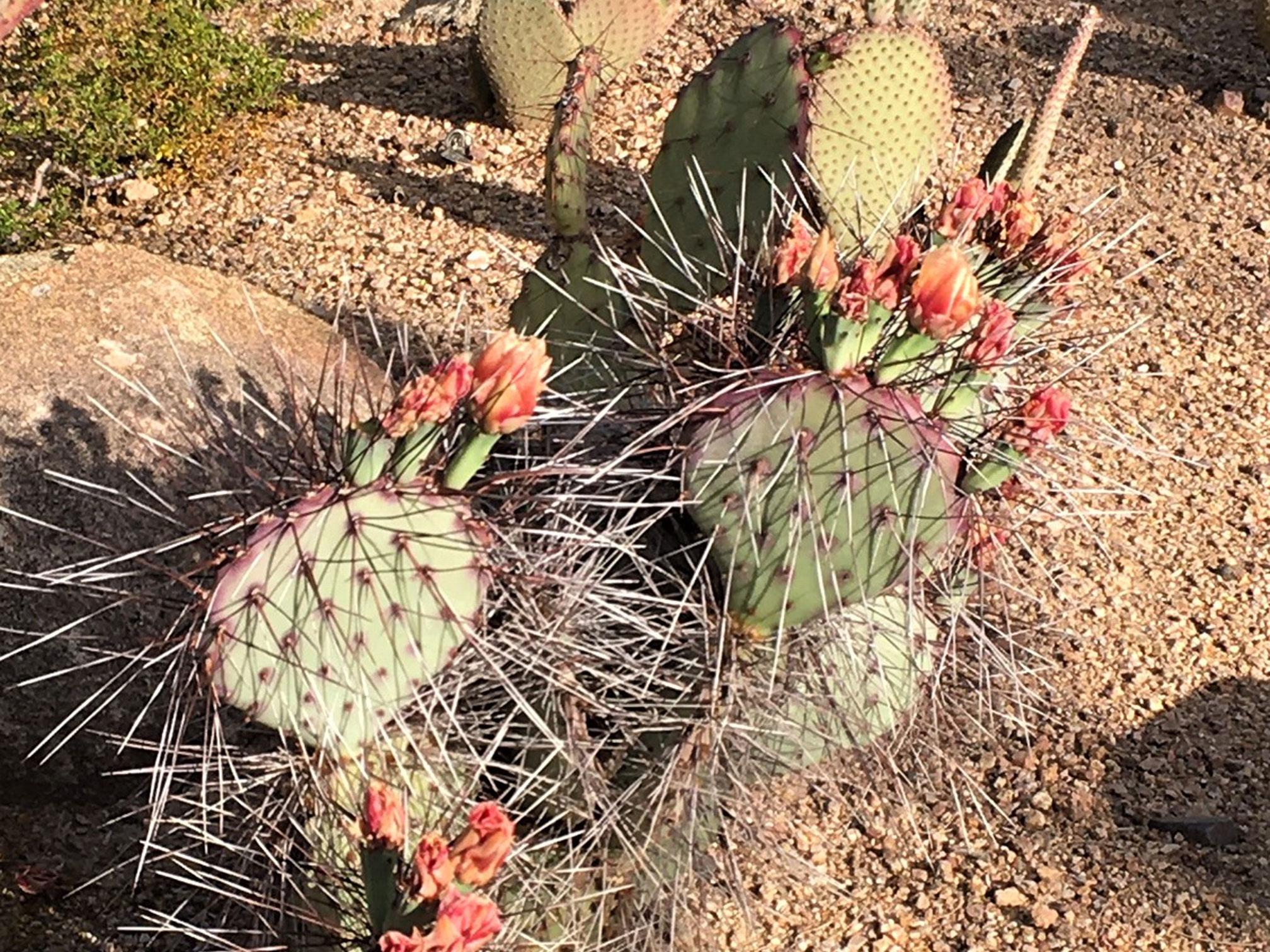
How did you do with figuring out the mystery plants? Hopefully, you enjoyed the challenge and, like me, now know just a little more about the variety of plant life in the southwest desert.
